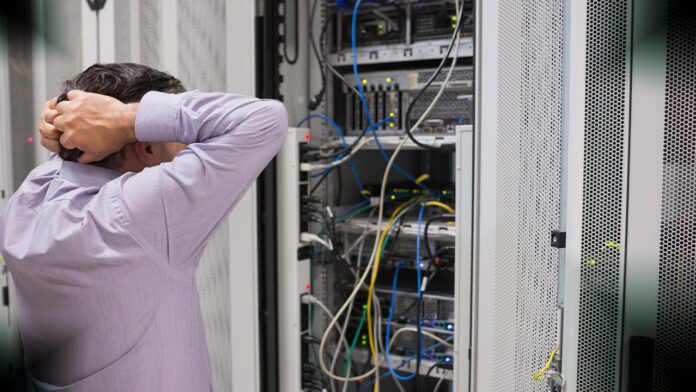No business owner wants to experience their website being unavailable. That usually happens during server downtime. You can find various reasons behind it, including hardware or software issues, an overloaded database, or a problem with a power supply.
Downtime can be a matter of minutes. Still, it can harm your business, leaving you with a tarnished reputation. It can particularly interrupt productivity. For example, suppose employees rely on cloud-based applications. In that case, they may be unable to send emails or do any other software work.
If your business is about online sale, downtime can cost you dearly. You may lose valuable sales while your employees’ work grinds to a halt. And the longer your business is down, the more likely customers will abandon you.
Data loss due to server downtime can be a nightmare for companies. Apart from causing a loss of revenue, it also imposes a risk of cyberattacks. Hackers can gain easy access to the network and destroy valuable data. As a result of your network collapse, your business will suffer greatly. So you should take appropriate precautions to ensure smooth server work.
System Monitoring
The first step in minimizing downtime is to monitor your central computers and ensure they perform optimally. Monitoring and alerting systems play a crucial role in preventing server downtime. Business size and structure determine the alerting system’s configuration.
Monitoring involves collecting and aggregating statistics about system and application performance metrics. Alerting involves evaluating alert rules against the current metrics. It relies on visual monitoring tools that can work with different platforms. So these warnings may be sent via email, push notifications, or third-party paging service.
When analyzing metrics, it’s essential to limit alerts to the most critical ones. Ideally, a sound monitoring system will have actionable alerts that can trigger a process of identifying and fixing the problem. Some systems send signals to in-house intervention teams. Others route them to an on-call rotation.
Put Inefficient Units Out of Work
There’s no magic number to determine the optimal working lifespan of any server. At some point, these computers usually get inefficient. So you’ll probably have to retire one of several mainframes. You can notice signs that it’s about time to retire your servers.
To ensure proper work, all your servers must be up to date. After three to five years, most of them show signs of aging, causing lags and decreasing specific capabilities. Also, their maintenance costs will rise significantly. To keep downtime to a minimum, you should monitor individual components to see if it’s time to replace them.
See the link below to know when is the time for server replacement:
https://www.techadvisory.org/2019/07/is-it-time-to-replace-your-servers/
Importance of Cooling
Maintaining the proper temperature of your servers is essential for optimal performance. Mainframes can function best when kept between 55 and 72 degrees Fahrenheit. Newer models can withstand higher temperatures. If they become too hot, they will begin to malfunction and cause costly downtime.
The cooling system should control the heat generated by computing equipment and replace it with cool air or fluids. That prevents malfunctions and downtime. Also, lowering the room temperature may reduce the power consumption of the cooling system.
A proper cooling system doesn’t negatively affect the server’s performance, but it will require close monitoring and piloting. Also, you could use backup cooling as it’s not always possible to keep your computers cool enough to prevent unexpected downtime.
High Availability
The purpose of high availability (HA) setup is to protect your servers in case of a system failure. It’s a software-based approach that enables you to recover your services as soon as possible when the main system fails. In other words, it maximizes the uptime of server systems.
To get the most out of your high-availability systems, analyze your current setup to ensure you have the proper backup and recovery plan. High availability systems are an excellent choice for businesses that must get back to order after a system failure. They can withstand brief interruptions and resume their operation after that.
Regular Maintenance
Frequent load testing is one of the most important parts of building and maintaining a website. By performing load tests on your site, you can reduce the time your server is down and improve its performance. Load testing helps you determine whether your website is ready for high volume usage.
Schedule maintenance during off-peak hours and use backup systems (more info on the importance of maintenance). If your data has been backed up recently, it can be easily extracted and deployed. So if you run a small business and use a single server, make sure you have enough disk space on another machine for backups.
Your server is critical to your business, so minimizing downtime is imperative. This unfortunate event can hurt productivity and profitability. While that can’t always be predicted and prevented, the good news is that there are ways to minimize it.






